Top 3 Mehndi design Hand art from the experts | wowvideos
Mehndi is a form of body art and temporary skin decoration originating in ancient India, in which decorative designs are created on a person's body, using a paste, created from the powdered dry leaves of the henna plant (Lawsonia inermis). Dating back to ancient India, mehndi is still a popular form of body art among the women of the Indian subcontinent, Bangladesh, Pakistan, Nepal, the Maldives, Africa and the Middle East. In the late 1990s, mehndi decorations became fashionable in the West, popularized by Indian cinema and entertainment industry, where they are called henna tattoos.
Mehndi is derived from the Sanskrit word mendhikā. The use of mehndi and turmeric is described in the earliest Hindu Vedic ritual books. It was originally used for only women's palms and sometimes for men, but as time progressed, it was more common for men to wear it. Staining oneself with turmeric paste, as well as mehndi, are Vedic customs, intended to be a symbolic representation of the outer and the inner sun. Vedic customs are centered on the idea of "awakening the inner light". Traditional Indian designs are representations of the sun on the palm, which, in this context, is intended to represent the hands and feet. Mehendi has a great significance in performing classical dance like Bharatnatyam.
There are many variations and designs. Women usually apply mehndi designs to their hands and feet, though some, including cancer patients and women with alopecia occasionally decorate their scalps. The standard color of henna is brown, but other design colors such as white, red, black and gold are sometimes employed.
Mehndi in Indian tradition is typically applied during Hindu weddings, Namboodiri weddings and Hindu festivals like Karva Chauth, Vat Purnima, Diwali, Bhai Dooj, Navraathri, Durga Pooja and Teej. Muslims in the Indian subcontinent also apply Mehndi during Muslim weddings, festivals such as Eid-ul-Fitr and Eid-ul-Adha.
In Hindu festivals, many women have Henna applied to their hands and feet and sometimes on the back of their shoulders too, as men have it applied on their arms, legs, back, and chest. For women, it is usually drawn on the palm, back of the hand and on feet, where the design will be clearest due to contrast with the lighter skin on these surfaces, which naturally contain less of the pigment melanin.
Alta, Alata, or Mahur is a red dye used similarly to henna to paint the feet of the brides in some regions of India, for instance in Bengal.
Likely due to the desire for a "tattoo-black" appearance, some people add the synthetic dye p-Phenylenediamine (PPD) to henna to give it a black colour. PPD may cause severe allergic reactions and was voted Allergen of the Year in 2006 by the American Contact Dermatitis Society.
-
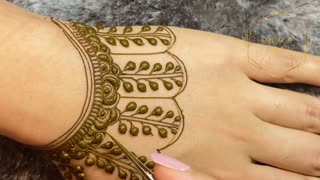 4:50
4:50
BarakatHenna
2 months agoSpecial Mehndi Design | Mehandi design for hands | आसान मेहंदी डिजाइन
45 -
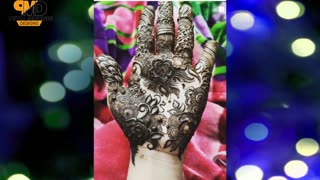 0:56
0:56
MixmaGnet Hub
4 months agoHenna art or mehndi design | | Part-7
111 -
 5:15
5:15
BarakatHenna
2 months agoLatest Mehndi Design for Back hand | New Easy Mehndi Designs | Mehandi Design | Mehendi for hand
73 -
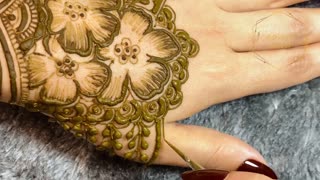 6:46
6:46
BarakatHenna
2 months agoNew easy and stylish mehndi design | Simple mehndi design | Mehndi design | Mehandi | Mehendi
35 -
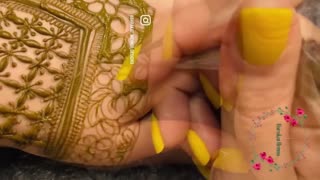 2:16
2:16
BarakatHenna
2 months agoBridal mehndi designs | Eid mehndi designs | Back hand mehndi designs | stylish mehndi design
67 -
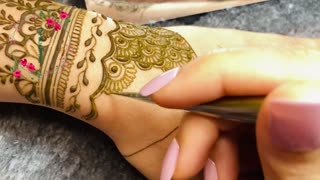 1:10
1:10
BarakatHenna
2 months agoEid special mehndi design | New easy and stylish mehndi designs | Bridal mehndi designs
63 -
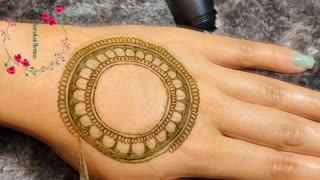 1:06
1:06
BarakatHenna
2 months agoNew stylish Gol Tikki mehndi design | Easy mehndi designs | Mehndi design easy and simple
57 -
 2:30
2:30
Reviewparks
2 months ago $0.05 earned4k Ai Lookbook Girl l Cotton Angrakha Dress | Khajuraho Madhya Pradesh #ailookbookgirl #aibeauty
148 -
 2:25
2:25
Reviewparks
2 months ago $0.02 earned4k Ai Lookbook Girl l Cotton Angrakha Dress | Khajuraho Madhya Pradesh #ailookbookgirl #aibeauty
94 -
 2:50
2:50
Reviewparks
3 months ago $0.05 earned4k Ai Lookbook Girl l Lehenga Choli | Varanasi #ailookbookgirl #aibeauty
1501